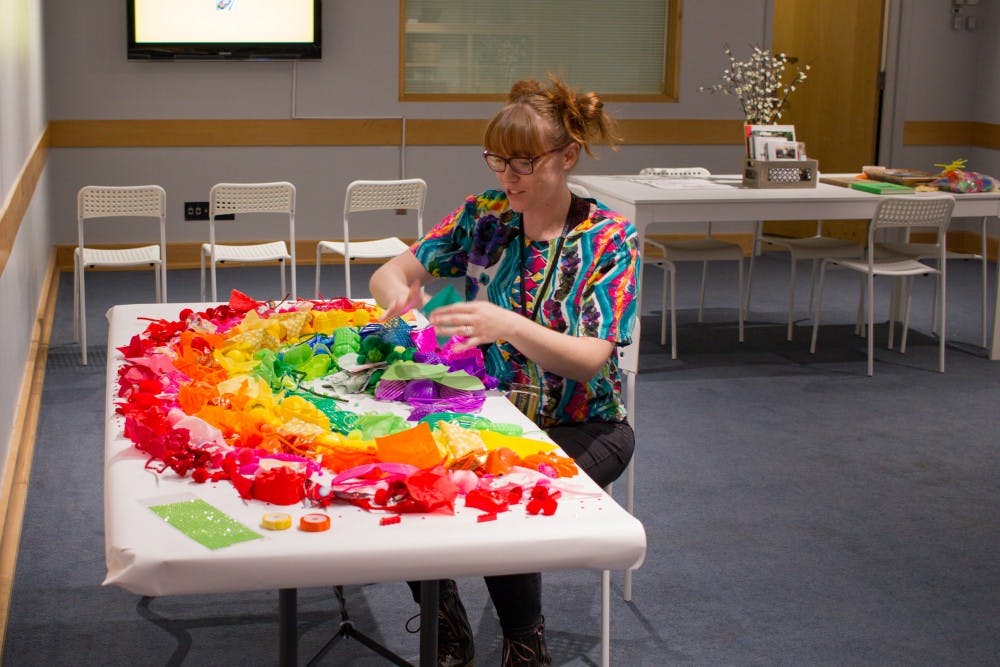From the disturbing effects of beauty standards in the digital age to the cultural shock of migrating to a new country, students in an upcoming intermedia art exhibition are tackling the various ways people experience reality.
“Reality as Presence” is the spring intermedia art senior exhibition hosted by the Herberger Institute for Design and the Arts. The event will feature eight seniors’ art projects that are portrayed through multiple disciplines such as video, performance and installations.
Emily Sarten, a senior studying photography, said that the exhibition, which will be on display from April 15 to 19, serves as many of the students final collegiate artistic statement before they graduate.
Sarten is showcasing video projects at the exhibition that use experimental techniques like found footage.
“Everyone is doing everything in their power to have this be the last hurrah and make a stand before their time here is up," Sarten said.
The artists featured in the event are each tackling different topics, and they wanted that to be reflected in the title of the exhibition, said Zachary Santa Maria, a senior studying intermedia art.
"We narrowed it down to 'Reality as Presence' because we all experience reality and the present moment differently," he said.
He said part of his project is a video called “Departure" which features footage of the artist making rice alongside audio of native Filipinos speaking in their native dialects about their migration experiences to the U.S.
"Rice holds similar migrant properties as humans because it’s grown and cultivated and then shipped out and separated," Santa Maria said.
He said he was heavily interested in migrant stories because of his Filipino heritage and the stories his family told him about their journey to the U.S.
For Sarten's part in the exhibit, she said her video projects capture elements that are "creepy and surrealist" and all tend to follow the theme of women’s issues.
She said her two experimental videos use found footage, including VHS tapes that she found at thrift stores, which contained home movies with footage of women who had just had babies.
The home movies take on unsettling nature, she said, because while they provide a window into intimate moments between mother and child, they've been discarded and left for anyone to see.
“There’s this kind of voyeuristic aspect of me finding these tapes and reusing them," Sarten said.
Her other video features less experimental filmmaking techniques than the others, but the concept is a little more fantastical as it follows the story of a 13-year-old girl on her birthday “and the only thing she wants is a brand new head.”
Other students in the exhibition are using a wide array of art media to convey their message, making the exhibition as wide-ranging in artistic techniques as it is in topic.
Andrew Vigil-Emerson, a senior studying intermedia art and global studies, said that his work in the showcase aims to explore and bring to life in a physical form the intangible topic of human relationships.
Vigil-Emerson said his part of the exhibition, called “Table It,” includes a table and ceramic plates and cups, all of which he made. The piece will feature stories embedded in the table from various individuals he's invited to take part in a series of "performance dinners" at the table itself.
He said he is in the process of hosting the private dinners with people of different cultures. Before the art show, he said he will inlay the stories from the dinners into the table with embroidery so that his piece can be shown as an installation.
“When we walk out of this room, this (table) can stand alone as an installation or a sort of sculpture, but in combining it with people it becomes something more alive,” Vigil-Emerson said.
Vigil-Emerson said he chose food as his way of bringing people into his project, because food is “an easy way to access yourself through stories, and it’s a place where you have intergenerational storytelling.”
He also took inspiration from his own memories revolving around food, his past work at a food pantry and the book “Feast: Radical Hospitality in Contemporary Art,” which he said all made him realize how food allows people to relate to themselves.
Vigil-Emerson said the exhibition as a whole features art that is not necessarily mainstream but has the ability to connect communities.
“Storytelling is a lot of moving through different perspectives and understanding different ways,” he said. “When we’re looking at ‘Reality as Presence,’ it’s a lot of understanding how art makes and creates reality and how our presence both creates a perspective and also creates an existence within that reality.”
The opening reception for "Reality as Presence" is April 16 at Gallery 100.
Reach the reporter at erfontan@asu.edu or follow @EndiaxRain on Twitter.
Like The State Press on Facebook and follow @statepress on Twitter.




